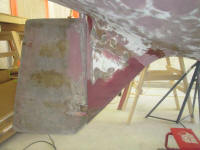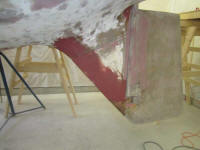
110 Cookson Lane | Whitefield, ME 04353 | 207-232-7600 | tim@lackeysailing.com
I began with some sanding, taking care of the skeg repair and cockpit locker lids as needed. Afterwards, I applied a second round of epoxy filler to areas of the skeg.
With the cockpit locker lids now at the same level of preparation as the remaining deck areas, I figured the best place to store them during the remainder of the project was in their proper locations in the cockpit.
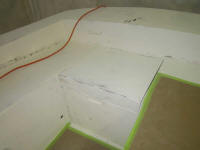
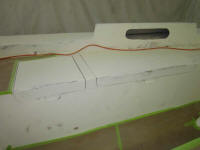
Some initial layout ideas for the galley equipment were next on the agenda. Using various manufacturer's specifications, I created simple cardboard templates of the maximum footprints of the proposed galley stove, sink, and drop-in DC refrigerator. The stove and sink were givens, and the refer was a desired option depending on its fit. I selected a standard-size sink that fit the available area well.
With the stove and sink in their logical (and essentially original) locations, I determined there was room enough for the footprint of the refer in the back corner of the countertop. The unit under consideration featured a removable compressor that would limit undercounter depth to a practical maximum of 20" for planning purposes; to determine the feasibility of that depth, I cut a stick to the correct length and used it beneath the counter to check the clearance.
The refer could be aligned with its long axis in either the athwartships or longitudinal direction, with sufficient room beneath for the required depth, at least at this initial layout time.
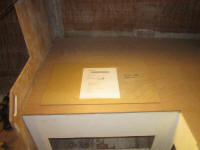
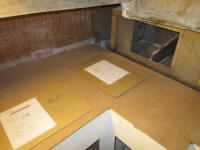
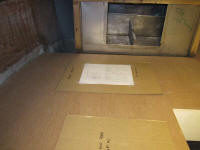
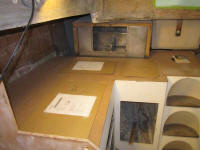
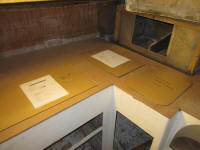
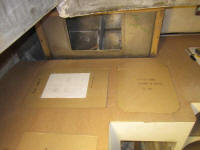
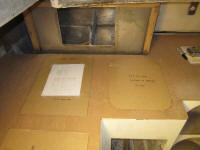
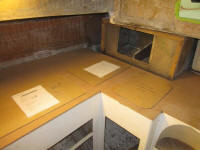
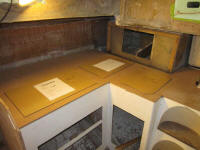
We'd been discussing what to do with the original icebox. While the owner liked and wanted to keep the concept of cockpit access, as per original, the original box left something to be desired in appearance and, assuredly, function, as the amount of insulation appeared to be minimal, and the box was far too large to be efficient even under ideal circumstances. For the time leading up to this point of the project, I'd operated largely under the idea that we'd simply leave well enough alone and work with the existing box, all the more so since there was a likelihood of installing a stand-alone DC refrigerator for "real" cooling. So I'd paid little attention to the original icebox, and only recently had I even decided to remove the cosmetic bulkhead that had covered the galley side of the unit, when I started work on the replacement countertop.
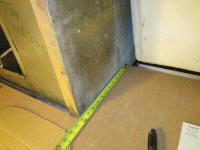
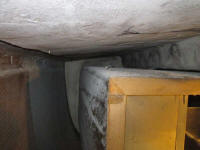
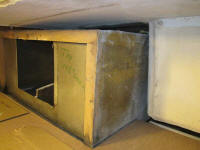
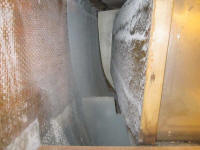
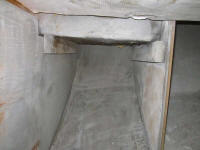
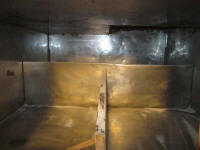
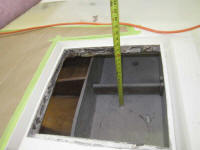
However, now was the time to revisit all options, and one thing I thought about was to remove the oversized icebox and replace it with a smaller, more efficient, and ultimately more useful unit located directly beneath the cockpit hatch, and with access only from the cockpit. To that end, I worked up some measurements of the available space to determine the feasibility of the idea. Creating a smaller icebox would open up additional space in the galley and perhaps better suit individual needs in this case.
There was a maximum of 22" of space between two bulkheads that defined the area beneath the cockpit hatch. Additionally, this overall measurement was constrained on the aft side by the bulkhead that defined the forward end of the starboard cockpit locker. With this bulkhead, plus allowing for the dimensions of the gutters surrounding the icebox hatch, there'd be roughly 2" of space to allow for the icebox and its insulation on this side.
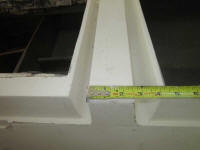
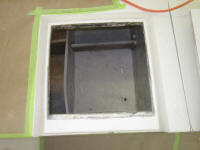
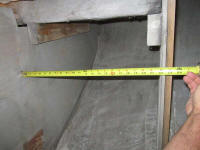
Assuming, for now, 2" of insulation also on the forward side of the box, this would leave an internal dimension of no more than 18", probably closer to 17" realistically. With a typical mass-produced ice block (10 lb.) mearsuring roughly 6" x 6" x 10", this seemed to be more or less a usable size, easily accommodating two blocks side by side on the bottom (assuming a square icebox footprint).
There was basically unlimited space (from a practical standpoint) for the box's dimension from the opening towards the hull, and also essentially unlimited depth available, other than limiting the depth to that which could be reached easily from above and allowing for convenient drainage.
The net result of these findings was that there'd be room for a usable icebox directly beneath the hatch, as long as certain inevitable compromises could be accepted.
Later, I started work on a rough toerail blank to begin to work out some of the cuts and dimensions of the new rails. From some scrap 2x4 lumber, and with a simply ridiculously dull blade (later changed), I worked on the blank to try and find a profile that worked. Ultimately, and late in the day, I made a cut the wrong way and essentially made the first blank null and void, so while I'd worked out several angles and was on the right track, ultimately I had little to show for it other than the wisdom of what I'd done so far. The photo of the blank below came from earlier in the process, before I'd made (and failed) the final cuts to bring the height dimension to where I wanted it, but I'd basically be starting fresh anyway.
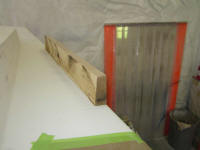
Total Time on This Job Today: 6.75 hours
